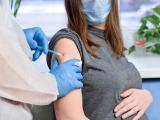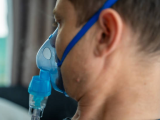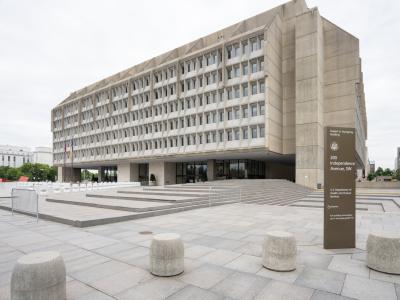Serologic testing helped scientists establish connections between two people with COVID-19 from Wuhan, China, to three clusters in Singapore, according to a study yesterday in The Lancet Infectious Diseases.
Also, a study today in The Journal of Infectious Diseases found that four of eight COVID-19 cases in three family clusters in China were asymptomatic or had only mild symptoms.
In a related study out of China in the same journal, researchers describe how the novel coronavirus lingered in 26 asymptomatic patients for as long as 36 days, how improvement on computed tomography (CT) may not correspond with a negative reverse-transcription polymerase chain reaction (RT-PCR) test, and false-negative results may occur.
From 2 infections to 28 after gatherings
In the Lancet study, researchers used serologic testing to trace the origin of three COVID-19 case clusters of 28 people to two people from Wuhan who attended a church service on Jan 19, infecting another churchgoer who then passed the virus to someone at a family Chinese New Year gathering on Jan 25, who then passed it to others at a service at a different church.
A church worker then infected others while continuing to work while symptomatic.
All but one patient had active infections confirmed using RT-PCR. The investigators mapped their activities during the 14 days before symptom onset until they were quarantined and traced people with whom they'd had prolonged contact.
Two symptomatic people linked to one church cluster weren't diagnosed until contact tracing was performed because they didn't meet Singapore's criteria of patients hospitalized or visiting primary care because of pneumonia. Although one of them had two negative RT-PCR tests, a serologic assay detected past infection with SARS-CoV-2, the virus that causes COVID-19.
"Although PCR tests offer a rapid diagnostic solution, they can only detect SARS-CoV-2 during the period of viral shedding, which is the acute phase of infection," the authors wrote, noting that the duration of viral shedding is uncertain. "Serological testing can have a crucial role in identifying convalescent cases or people with milder disease who might have been missed by other surveillance methods."
They said that their results suggest that the novel coronavirus is spread primarily through prolonged and repeated close contact such as in a church, where the disease can easily spread via respiratory droplets or aerosols during activities such as singing.
They also highlight the importance of conducting contact tracing quickly, noting that their success was likely due to acting within 4 weeks of the first imported case. "As the epidemic continues, it might be progressively difficult to establish linkages by relying on traditional epidemiological methods alone," because of difficulty getting information from cases and contacts and recall biases.
Serology results crucial to mitigation
In a commentary in the same journal, Amy Winter, PhD, MPH, and Sonia Hegde, PhD, MPH, of Johns Hopkins University said that the study highlights the limits of RT-PCR used alone for surveillance because it cannot detect past infection, and the value of serologic testing, which can detect both past and active infections if captured within the appropriate timeline after illness onset.
Although accurate serologic tests are still in development for widespread use, Winter and Hegde said that, by generating estimates of who is and isn't immune to COVID-19, they can estimate attack rates or case-fatality rates, strategically allocate immune healthcare workers, inform and evaluate effectiveness of public health measures, and identify people whose antibody isolates could be used for plasma therapy.
"Although RT-PCR diagnostics will still be vital for identifying acute infection, as the SARS-CoV-2 pandemic continues to spread and cases accumulate, serological testing and data will prove increasingly important to understand the pandemics' past and predict its future," they wrote.
No or mild symptoms in half of cases
In the first Chinese study, 8 of 15 family members (53%) in Shandong province were diagnosed as having COVID-19 in a three-family cluster. Three of them had no symptoms, and one had only mild symptoms.
The researchers conducted an epidemiologic study on illness onset after possible exposure to the virus during travel to Wuhan or Hubei province, live-nimal markets, or people with a fever. They also conducted contract tracing, reviewed medical records, used RT-PCR to diagnose infection, and sampled frequently touched surfaces in the families' homes.
Two patients, ages 62 and 65 years, were hospitalized after initially being misdiagnosed as having a common cold, given antibiotics and an antiviral medication, and prescribed traditional medicine. They had traveled to a city near Wuhan and had changed trains in Wuhan.
Their son and daughter-in-law were also infected, although only the son had symptoms. The daughter-in-law's mother, who lived separately, became infected during a visit to her daughter's home and passed it on to her son. While the mother had no symptoms, the son had fever and cough for longer than 2 weeks.
A man who worked and dined with the son in the first scenario was infected and spread it to his 3-month-old daughter. While he had only an occasional cough, the infant had no symptoms.
Six of the patients had abnormalities on chest CT. All patients recovered and were released to home isolation for 14 days. Novel coronavirus was detected in one family's home, but the researchers did not say whether it was live.
Sequencing showed that the complete genomes of COVID-19 from all infected patients were greater than 99.9% identical and were clustered with other virus sequences in China and elsewhere.
"Further studies are needed to investigate the contribution of persons with asymptomatic or pauciasymptomatic [mildly symptomatic] SARS-CoV-2 infection and the relationship with transmission of the virus in the household, occupational, and community settings," the authors wrote.
RT-PCR test results can be misleading
In the second Chinese study, researchers conducted a retrospective epidemiologic study of 26 hospitalized asymptomatic COVID-19 patients. Twenty-two (84.6%) were part of a case cluster, 16 (61.5%) were men, 2 had smoked about 20 cigarettes a day for longer than 20 years, 2 had high blood pressure, and 1 had coronary heart disease. Their median age was 29.5 years (range, 2 to 80).
Median time from contact to diagnosis was long, at 19 days (range, 8 to 24) and to the last positive RT-PCR test was 21.5 days (range, 10 to 36). Median time from diagnosis to a negative test was significantly shorter in the 16 patients with normal CTs (7.5 days; range, 2 to 20) than in the 10 patients with abnormal findings (12.5 days; range, 8 to 22; P < 01).
Seven of 10 patients who initially tested positive later tested negative while showing improvement on CT, while 3 showed improvement on CT while still testing positive. All patients recovered and were released from the hospital.
"It is necessary to note that SARS-CoV-2 can be present for a long time in some asymptomatic patients; the change in nucleic acid test [RT-PCR] results from positive to negative in some patients may not occur synchronously with the CT improvement; and false negatives of the nucleic acid test for SARS-CoV-2 may occur," the authors said.





















